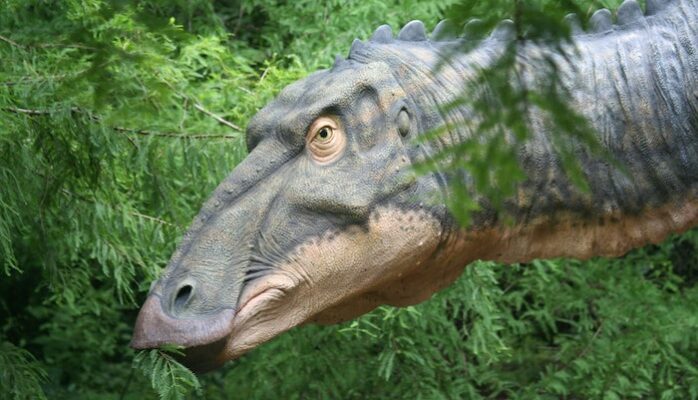
If you like dinosaurs, it’s easy to fall in love with the giant ones. The ones so well adapted to their niche that they are skilled hunters, the ones that look so cool that it’s just one of a kind. “Jurassic Park” likes to capitalize on these big hard-hitters, and museums love to show off a unique specimen.
But what about a new list? An appreciation for those underdogs who deserve more recognition! I daresay that it’s about time someone recognizes the little-known small guys, the real soft lil dudes that pose no harm to humans, the ones that couldn’t threaten you if their life depended on it. I present to you: the four dinosaurs LEAST likely to kill you!
1. None. Dinosaurs are extinct.
Who would win in a fight, a living person or a dead pile of dust, bones, and oil? Obviously, the living person. Dinosaurs are all dead, and that means that none of them could intimidate a foe if they tried. They are the LEAST likely animal to hurt you!
2. Microraptor
Fun, right? Four wings! This dinosaur is a theropod, which is the same general family of dinosaurs that walk on two legs and are carnivorous. But wait, I thought no dinosaurs could kill me cause they are all dead?
Well, my reasoning for this one is that it could not kill you even if its lifeless skeleton fell over on top of you, because it is so small it only weighs 1 kilogram (2ish pounds). So really, there is no way that the microraptor could realistically injure you, much less kill you.
3. South Philippine Dwarf Kingfisher
Birds are dinosaurs, so I had to mention one dinosaur that you actually COULD encounter alive. This is, however, one of the rarest birds on Earth, with only a handful of nesting sites in Asian wetlands that we know of. In fact, we only recently within this decade got our first-ever photographs of this amazing bird, even though we have known about it for 130 years. This adorable kingfisher is the third-least likely dinosaur to kill you because it is not only extremely tiny and harmless, but so rare that you will likely never see one in your lifetime.
Wait, I thought you said dinosaurs were extinct….
Well okay yes. Dinosaurs as we know are extinct. And birds are dinosaurs. Here’s the thing: humans love categories, but nature doesn’t. As nature evolved, it created two cool ways to organize the hip bones: bird hipped (ornithischian) or lizard hipped (saurischian).
Theropods are saurischian, and so are all birds. Which means birds are lizard hipped. They are literally a surviving sect of the dinosaur family tree, which got to evolve for new niches when dinos went extinct. I don’t make the rules. And neither does nature, it just develops with entropy.
4. Megalodon
There has been a lot of controversy over whether Megalodon actually still exists or not. Some have theorized that they live in the depths of the ocean where we cannot yet explore. However, we now know that Megalodon is certainly extinct — we have fossil records showing this.
But I’m not here to talk about if it exists: Megalodon is a dinosaur that cannot kill you because it is not a dinosaur. Marine animals, extinct prehistoric megafauna or not, are not part of the dinosaur family. Therefore, you cannot make it onto the “killed by a dinosaur” list with this one whether it is alive or not (it’s not).
If you think about it, fossil record availability limits our dinosaur knowledge, so the best way for humans to explore it is by categorizing. Even though these categories are purely for definition, it can still include things we don’t want it to, and exclude things we do want to consider as dinosaurs. I don’t make the rules, I just follow them. Movies tend to exaggerate for effect, but the fact is, something extinct can’t hurt you.
Photo by Erik Larson on Unsplash